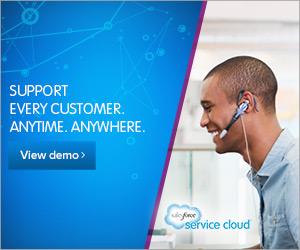
photo credit: @Dave
Remember the good old days of business software? Those days where you opened the large box and found a 100-page technical manual on how to install the software and a 200-page software manual on how to use it?
We’ve come a long way from those days where business software was specific to the department it would be used in, as it could not be integrated into any other departments’ computer systems. In those days, business software was focused entirely on the company needs and operations. It did not focus on the employee that would use it, or the customer that may interact with it through customer relationship management practices. Let’s take a look into the evolution of business software and how much it has changed to become what it is today.
Business Software Is A Utility That Isn’t User-Friendly
Business software in years past did not take into consideration the Internet or the shopping habits of customers. It was strictly a utility that a company used in specific operations. Software was bulky, as the interface did not allow for the easy input of information, data management, or storage of customer information. The system was strictly for utilitarian purposes to complete a highly specific task.
Several downsides to business software where that company departments had few ways to share updated customer information and orders during real-time circumstances. This slowed down operations when a problem arose with an order, as the updated data would not be available for everyone to see. Employees also were only encouraged to make a sell and move on to the next customer. Business software did not allow for employees to develop a business relationship with existing customers to engage in effective cross-selling tactics and continued customer satisfaction for the entire time the customer would do business with the company.
Business Software Shifts To Employee Usability
Today, business software is being designed for two people: the employee and the customer. This is a big step from just designing software for the company, as the employee can now give input on how the software can create a more productive working environment. It allows for more integration of other software and computer systems, as this let’s employees share real-time data with other departments to increase operation efficiency. In addition, the software is easier to use. The employee has a simplified interface that doesn’t require a significant amount of time to learn as the employee can just sit down and start working.
Companies are also adopting customer relationship management solutions when it comes to using business software. Simply focusing on new customers interested in products and services no longer permits a company to survive during the rough times. Companies have to work to retain existing customers, and that requires business software that permits employees to capture and store customer information to build meaningful business relationships.
As Technology Changes, So Too Will Business Software
A customer’s purchasing habits and employee’s work needs are changing with technology, and companies must recognize this to have the most efficient business operations. With the Internet playing a major role on how customers interact with a business, the business software must take into account these interactions to give customers the best experience while allowing employees to be at their most productive level.
About the Author: Bryan Grayson writes about business software, CRM, and more.













